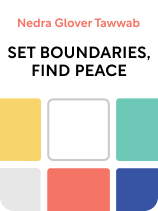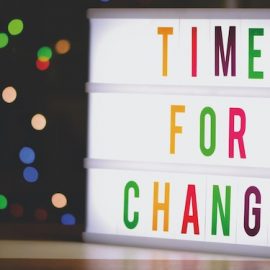

This article is an excerpt from the Shortform book guide to "Set Boundaries, Find Peace" by Nedra Glover Tawwab. Shortform has the world's best summaries and analyses of books you should be reading.
Like this article? Sign up for a free trial here.
Do people often overstep your boundaries? How do you effectively set and communicate boundaries for how you want and don’t want to be treated?
Before setting your boundaries, you’ll first need to identify where your boundaries lie. According to therapist Nedra Glover Tawwab, you should identify two categories of boundaries: personal boundaries and social boundaries.
Here’s how to set boundaries with people, according to Tawwab.
Identifying Your Boundaries
In her book Set Boundaries, Find Peace, therapist Nedra Glover Tawwab explains how to set boundaries with people (and how not to). According to Tawwab, there are two kinds of boundaries you need to establish: personal and social.
Your personal boundaries are your standards for how people should treat your physical body. Personal boundaries specify what level of physical and sexual contact, if any, you’re comfortable with in your relationships.
To identify your personal boundaries, reflect on a situation where physical touch made you uncomfortable. Ask yourself what specifically made you uncomfortable and how you’d like to be treated in the future. Once you’ve identified a situation where you’d like to set a personal boundary, define the boundary by writing down a statement that includes both the behavior that makes you uncomfortable and what changes you’d like to see.
| Values-Based Boundary-Setting While Tawwab’s approach to personal boundary-setting focuses on specifically defining acceptable and unacceptable behaviors, other authors define personal boundaries more flexibly. These authors see boundary-setting as a continued effort to live by your values in your relationships. Specifically, these authors caution against offering ultimatums when setting boundaries. While Tawwab doesn’t recommend setting unreasonable ultimatums, she often frames boundary-setting in terms of defining strictly unacceptable behaviors and enacting consequences in response to these behaviors. As opposed to Tawwab’s approach, values-based boundary-setting focuses less on specific behaviors and consequences, and more on making an ongoing effort to honor your values. As part of this effort, you take time to share your values with the people in your life. In these conversations, you use your values to explain why certain behaviors make you upset, and work collaboratively toward a solution that fits within your values. |
For example, Tawwab writes that if you notice that you like hugging friends but not people you’ve only recently met, you may have identified a personal boundary. You could define this boundary as follows: “I’m not comfortable hugging people I’m not close to. Next time we see each other, I’d rather shake hands or wave hello.”
(Shortform note: Tawwab’s example scenario, in which someone gives you an unwanted hug, can be an especially tricky issue in the workplace. Experts recommend that if you’re uncomfortable with the way a coworker wants to physically touch you, you should stop them and speak up. In these situations, the law may even be on your side—in some cases courts have ruled that unwanted workplace hugs are a form of workplace sexual harassment.)
As compared to personal (physical) boundaries, your social boundaries set expectations for behavior in your relationships. As Tawwab notes, this includes standards for how others should speak to you and about you, how you share your time with others, and how others should treat your belongings.
To identify your social boundaries, consider a social situation in which someone else made you feel uncomfortable. Then, write a statement that describes the behavior that makes you uncomfortable and how you’d like to be treated in the future.
For instance, If you feel upset when relatives make jokes at your expense, it’s probably a good idea to set social boundaries in those relationships. An example boundary might sound something like: “Those kinds of jokes make me uncomfortable. I’d prefer it if you could keep it positive when talking about me.”
(Shortform note: Your social boundaries may also include boundaries you set with yourself about how much time you’re willing to spend socializing. With the advent of social media, the fear of missing out (FOMO) has become increasingly common. FOMO can lead you to stretch yourself thin in the attempt to make it to every social function you’re invited to. To avoid letting FOMO get the best of you, set boundaries with yourself and with your friends about how much time you can spend socializing.)

———End of Preview———
Like what you just read? Read the rest of the world's best book summary and analysis of Nedra Glover Tawwab's "Set Boundaries, Find Peace" at Shortform.
Here's what you'll find in our full Set Boundaries, Find Peace summary:
- How to transform the relationships in your life with boundaries
- Why people struggle to reinforce their boundaries
- A step-by-step guide for identifying and communicating your boundaries






